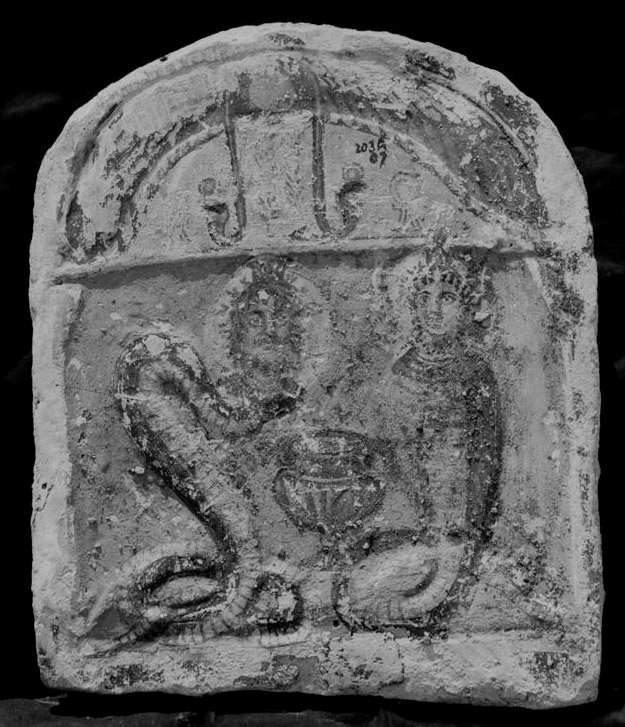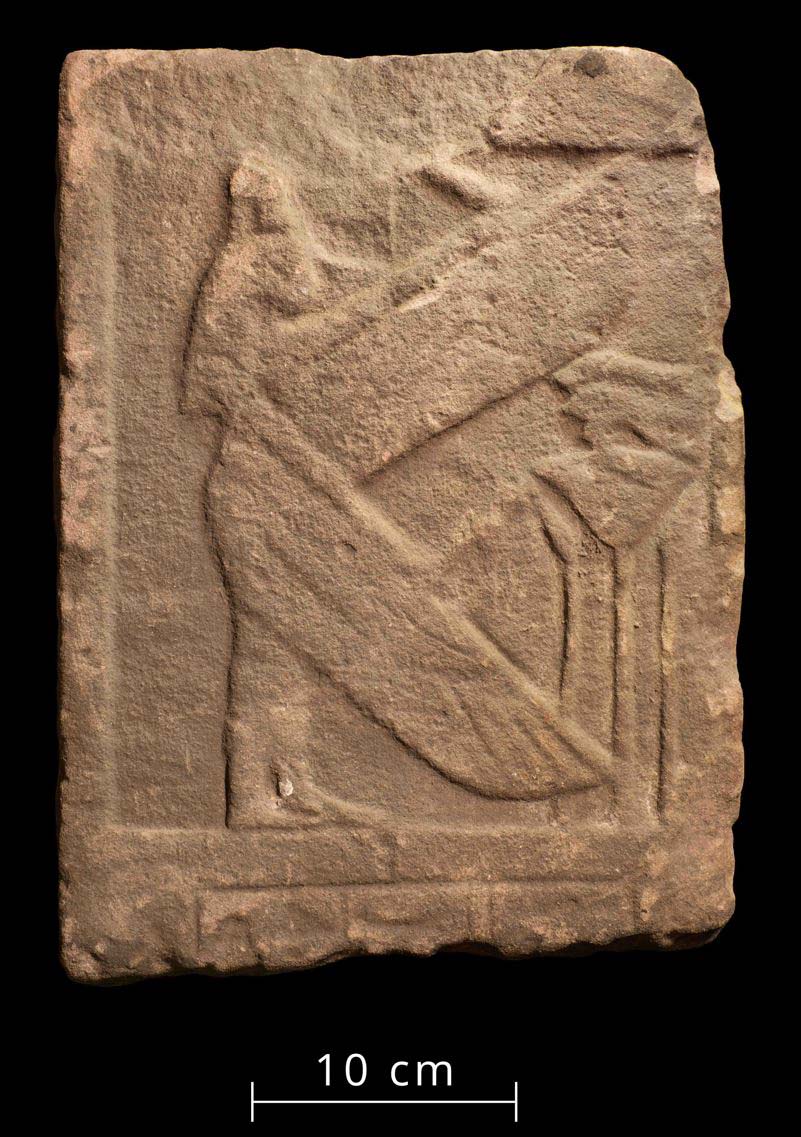Zoomorphism
Visible symbols of divine power, expressed through animal imagery, were combined with the representation of human agency in ancient Egyptian and Sudanese religious iconography. This resulted in composite deities which are among the most identifiable features of ancient Egyptian art.
Most frequently this took the form of animal-headed humans, but they could also be represented as human-headed animals, or humans with wings. Sometimes there was no human element at all, with a god instead being shown as a combination of several different animals.
Funerary stela depicting the goddess Isis-Thermouthis and the god Serapis-Agathodaimon, with serpentine bodies and human heads. Once painted, the decoration has faded but there remains an indication of a vessel between the two figures, possibly for offerings. A photograph taken just after the object's excavation in 1907 shows the beautiful painted detail of the faces. It is not clear when or why the paint on this stela entirely disappeared - one possibility is a botched cleaning or attempt at conservation. Abydos, Egypt; Greco-Roman Period (332bc-390ad). E.9, JG/A/635

Rectangular stela, showing a coiled falcon-headed cobra in front of an offering table. The position of the snake is reminiscent of votive stelae to the goddess Meretseger, however the falcon head on this example is unique. Egypt; New Kingdom (1550-1292bc). E.79
Sandstone block with carved depiction of the goddess Isis with outstretched wings, referencing the myth where she turned herself into a kite and used her wings to beat air back into the lungs of her deceased husband, Osiris. Meroë, Sudan; Meroitic Period (542bc-350ad). E.8312

Previous: Animals as Avatars